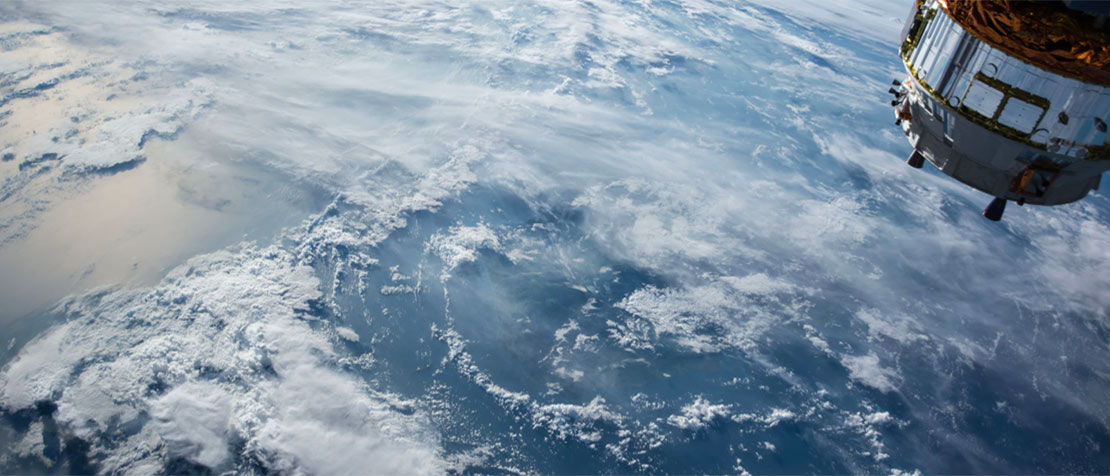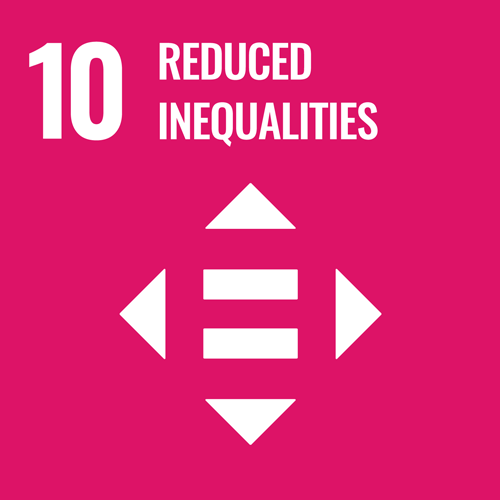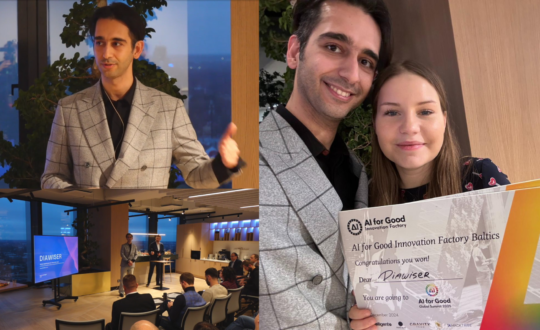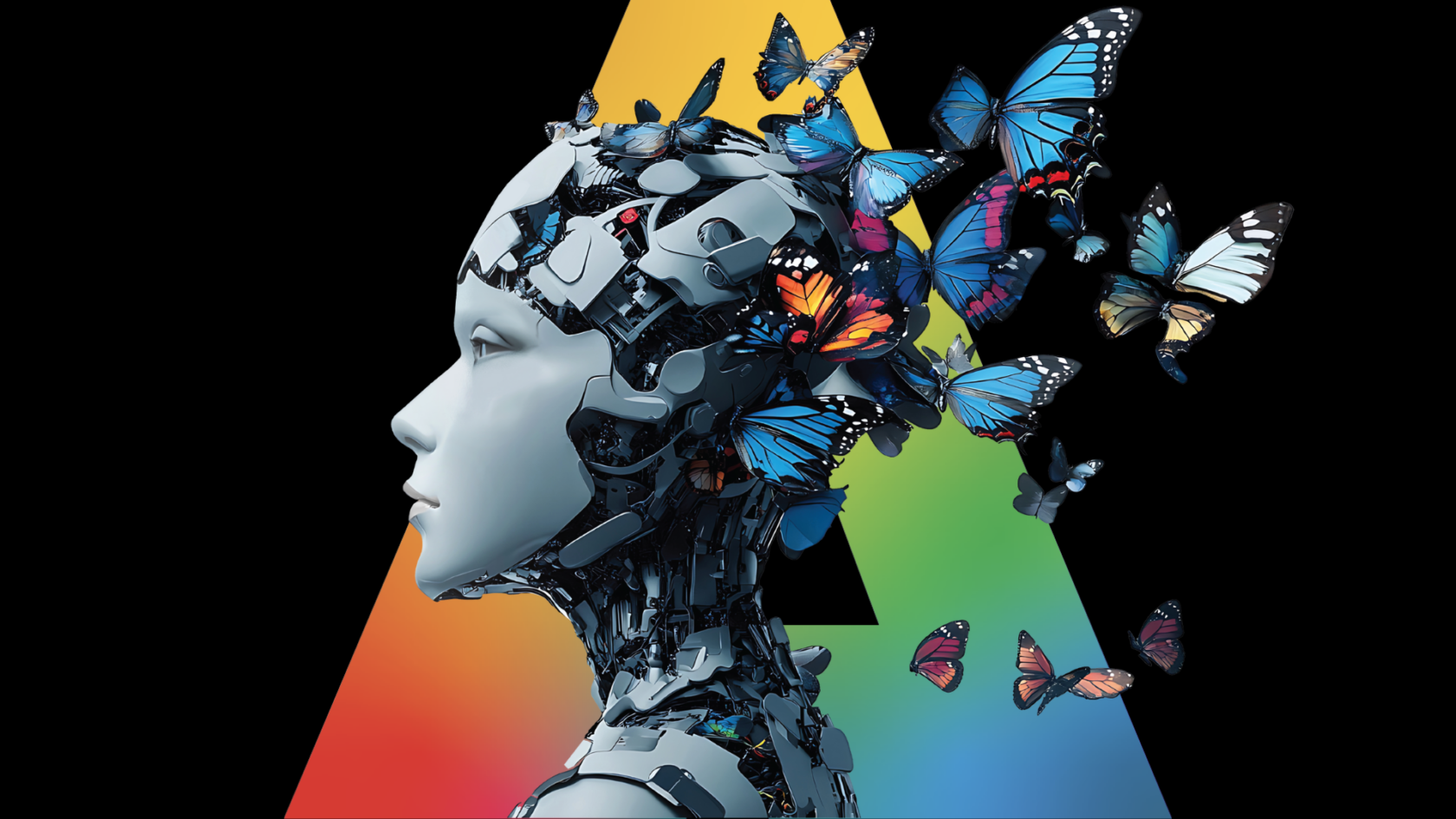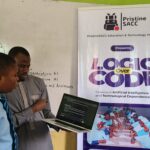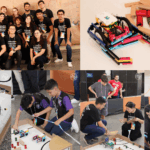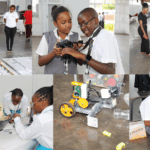New developments in the space industry and advances in cloud computing are presenting opportunities to improve people’s lives at a pace and scale not seen before.
From mapping poverty to improving food security to responding to disasters, these developments could accelerate progress on each of the United Nations 17 Sustainable Development Goals (SDGs).
It will take Artificial Intelligence (AI), however, to unlock this potential by turning the skyrocketing amounts of space data into actionable insights for the world’s decision-makers.
It will also require unprecedented amounts of international cooperation between private companies, governments, universities, international institutions, civil society – and the general public.
The good news is that leaders and innovators representing all of these groups are sharing best practices and future needs during the AI for Good Global Summit in Geneva, Switzerland this week.
“Let’s welcome a new space race – for good,” said Wenjian Zhang, Assistant Secretary-General of the World Meteorological Organization as he explained how AI can help humans better monitor and predict serious weather events as well as disaster relief and greenhouse gas monitoring and other ways to help fight climate change during one of the AI for Space Breakthrough Sessions
Super-charging space science
During the Summit, top experts shared perspectives on how AI could herald a new era of humanitarian aid.
“AI is bringing breakthroughs in terms of near real-time data.” — Romaric Redon, Airbus
“Space is so good at generating data sets. Data is key,” said Jorge Del Rio Vera, Scientific Affairs Officer (Space Technology), Space Applications Section of United Nations Office for Outer Space Affairs (UNOOSA). But “how can we make space data open to everyone? Not just open data, but giving people the tools to use it to improve lives.”
He mentioned UNOOSA’s partnership with Airbus to help provide better data on disaster relief to help people provide relief to areas they didn’t think would be as affected.
Pierre-Philippe Mathieu, Earth Observation Data Scientist for the European Space Agency (ESA) described how ESA is working with partners worldwide to study the health of the earth by looking holistically at all aspects that can be measured with Copernicus system, the European Union’s Earth Observation Programme,
He said there are some 150,000 users who have access to 15 petabytes of open and free data that goes “directly into policy-making.”
For instance, they are monitoring sea levels and can measure improvements or declines in air quality in near real-time.
He spoke of new capabilities provided with the prolific rise in small satellites and a potential “revolution in sensing” brought by High-Altitude Platform Systems (HAPS) and drones. He mentioned Amazon’s plans to invest in space as an example of new industry dynamics that could bring big benefits for humanity.
“I can match every goal (SDG) with a project we’ve done in the past few years.” — Andrea Bersan, Maxar Technologies
But there’s a long way to go, he said. Having AI is “a must” in order to crunch all this data: “It’s no longer an option.”
What can AI do?
AI allows you to take more measurements with fewer instruments and helps build virtual instruments, said Mark Cheung, Astrophysicist for Lockheed Martin and the NASA Solar Dynamics Observatory. This allows he and his colleague to study the sun at much lower cost and find more information – and potential breakthroughs – much more quickly.
Sharing current use cases
Romaric Redon, DataLab manager at AIRBUS Defence and Space, explained that Airbus is helping to provide a “sandbox environment” to monitor the state of the earth, together with partners and customers by providing services and tools so that a range of different stakeholders can develop their own data mining capabilities.
Airbus has embraced deep learning, he said, to monitor trends, detect anomalies and figure out ways to help partners improve deforestation monitoring, disaster management, water management, human trafficking, disease outbreak management, precision agriculture and more.
“AI is bringing breakthroughs in terms of near real-time data,” said Mr Redon. “AI could help you generate maps so you don’t have to be a radar specialist to interpret data.”
Providing decision-makers with simple tools that provide clear options for actions to improve humanitarian efforts, many participants agreed, is at the essence of unlocking the potential of AI.
For example, Airbus’s Starling product helps a range of clients worldwide to monitor deforestation using AI to monitor land covering.
Mr Redon and others credited advances in cloud computing with making computing power widely accessible and affordable, providing the means to collect the space data and mine it with AI.
Andrea Bersan, Vice President of Global Industry Business Development for Maxar Technologies, showed the audience a range of different use cases for how Maxar is partnering with industry and government to provide space data to improve lives.
He said that some 3 square kilometers of satellite data gets put into the cloud every day and is made available through Maxar’s platforms.
“I can match every goal (SDG) with a project we’ve done in the past few years,” said Mr Bersan.
For example, he described how they are working with the World Bank to predict poverty in Sri Lanka, using machine learning and AI to crunch satellite imagery data.
“The most important thing is to create an ecosystem, so we can work together,” said Mr Bersan.
”In order to realize the full potential of AI for Good you have to involve everyone,” said UNOOSA’s Vera, echoing the consensus viewpoint of those in the audience.
The audience agreed. But how?
Universal access to space and data
Bradley Gram-Hansen, an AI researcher at the University of Oxford, shared with the audience many of the open data sets of space data that are available to all, including the Humanitarian Data Exchange, which combines a variety of data sources so that anyone in the world can access and download datasets to help do humanitarian work better.
He also mentioned some current use cases, including a project in which Oxford is using some of the available data sets and tools to map informal settlements (slums) in developing countries using machine learning and low-resolution, multi-spectral data. He shared some examples, including Cape Town, South Africa and Mumbai, India where they could – among many other things – detect which roofs were made with asbestos in order to give authorities more information that could aid their health efforts.
Challenges
Mr Gram-Hansen highlighted a big problem that many participants also noted: There is a wide variety of incompatible data types and formats that makes it difficult to use the data for analysis. Data scientists like to joke, he said, that some 80% of their time is spent just cleaning the data, leaving them with little time to mine the data for meaningful insights.
Many participants expressed the need for a uniform way of inputting the data so that it is usable and ready for AI to process properly.
There are also significant challenges when it comes to intellectual property rights (IPR) issues with who owns the data and can it be shared.
Talent and education also came up as a serious problem. AI is so new there aren’t enough specialists.
Mr Cheung spoke of a “talent bottleneck.” Many of the scientists and engineers don’t have the ability to use AI or deep learning, he said.
“We need the right data to make the right decisions. We need new methods to mine the data. We want to create info systems – and a control room for the planet,” said Mr Mathieu of ESA.“If you want to really do good, there is a need to educate people about how to read data to make good decisions.”
The AI for Space track
The AI for Space track was one of five tracks available for participants of the Summit to follow.
The track focused on the areas where AI techniques can be applied to space datasets in order to accelerate progress towards the SDGs but also the increasingly integral role that space and AI both have in protecting our planet and generating benefit for all humankind. It had the following aims:
- Identify areas where there is a high potential for impact for AI in Space, for collective benefit and the potential partnerships and models that might enable progress
- Facilitate an open discussion on the barriers to deployment of AI tools, and begin thinking about what is needed to overcome them
- Find common agreement on requirements for data to enable beneficial AI in the Space sector
- Take the first steps towards agreeing broad principles around governance for AI and Space
- Identify selected projects or efforts that will spin-out of the track and begin to be realised



